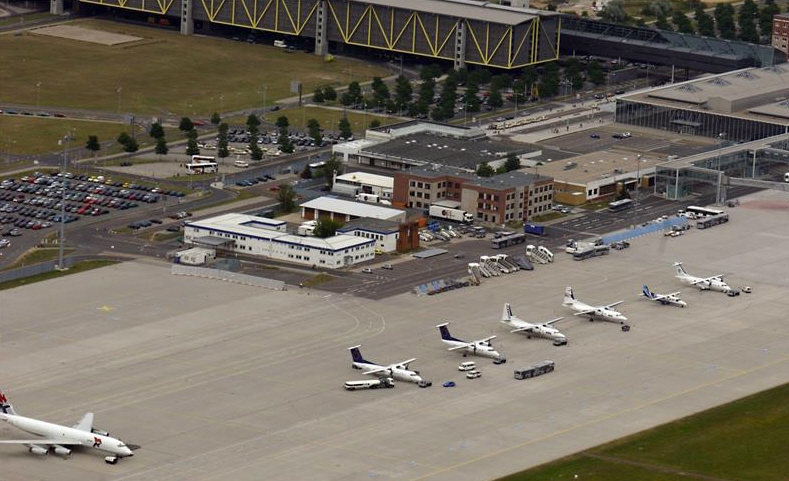Spring is here and that means fewer airplanes need to be de-iced. That may be good, according to a new study which finds that de-icing agents accumulated during the winter, which end up on unpaved areas and infiltrate into the soils during snowmelt, could end up in groundwater.
This is not news. Airports in the developed world are required to keep groundwater levels safe and the de-icing agents are filtered by the natural self cleaning capacities of soil. Chemicals such as propylene glycol and potassium formate are degraded by micro-organisms and don't get into the groundwater.
But a new paper finds they could still have an impact, because the microbes use oxygen to degrade the pollutants. As a consequence iron and manganese oxides, which stabilize the intergranular cement of the structure of the soil, dissolve.

Photo: Jan-Peter Kasper/FS
For the study, researchers analyzed the soil around the airport of the Norwegian capital Oslo. There, every winter about 1,000-1,500 tons of de-icing agents are used.
“At the same time, the airport is situated directly next to the largest superficial aquifer in Norway, the Romerike-Aquifer,“ explains PD Dr. Markus Wehrer from the Friedrich Schiller University Jena.
The geoscientists took soil core samples close to the runway of the airport and examined them and graduate student Heidi Lissner explains loaded soil cores with water that contained de-icing chemicals and thus simulated a “thawing event“. She collected the seepage water after it passed through the soil cores, followed by an examination for de-icing chemicals as well as the oxygen content and additional parameters.
It's not a panic situation and there are a number of solutions. Airports could install specific areas which allow the thawing water to seep away in a controlled manner, making for more controlled use of bacteria in the soil that degrade the chemicals. Also, alternative substances, which can be used for the degradation of pollutants similar to the way in which oxygen works, may be supplied. And the texture of the soil could be shaped in a way that delays the seepage of the polluted soil water. By using a longer interval, which is then available for the degradation of the substances, a lack of oxygen could be avoided, because atmospheric oxygen is transferred slowly but continuously into the soil.






Comments